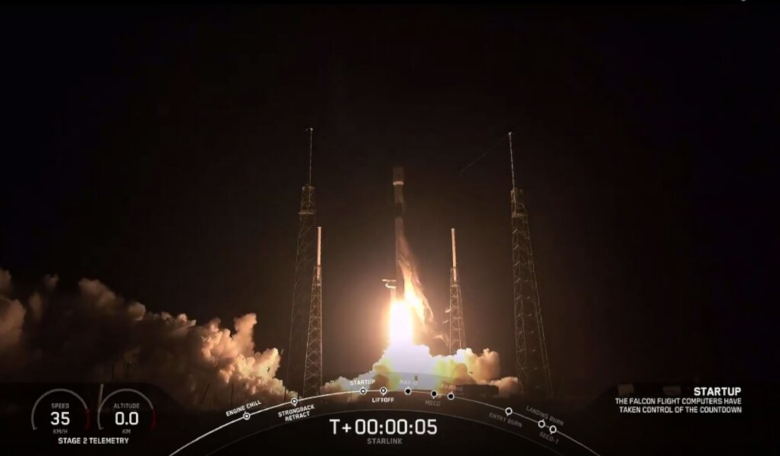The first batch of SpaceX’s Starlink constellation were lofted to space yesterday via a reusable rocket that had already flown twice before. The payload, which although numbered a whopping 60 satellites in one launch, is just a fraction of the total number Elon Musk will send to orbit so that he can complete his internet-from-space mega constellation. All in all SpaceX plans to deploy nearly 12,000 satellites in three orbital shells by the mid-2020s.
The five dozen spacecraft, which weigh about 18.5 tons (16.8 metric tons) and was stated by Musk as being the heaviest payload that SpaceX has ever launched, lifted off from within the nose cone of a Falcon 9 rocket that had blasted off from Space Launch Complex 40 (SLC-40) at Cape Canaveral Air Force Station at 22:30 local time (02:30 GMT, Friday).
An hour later, the now thrice-used rocket began to release the satellites at an altitude of 450 kilometres (280 miles). "Successful deployment of 60 Starlink satellites confirmed!" the company said on its official Twitter account.
The deployment of the satellites also marked another first for the company. Instead of releasing each unit on an individual spring-based mechanism, SpaceX literally spun the satellites off the rocket’s upper stage.
"Each of the satellites on the stack has a slightly different amount of rotational inertia," Musk said during a call with reporters last week. As such, deployment "will almost seem like spreading a deck of cards on a table," he added. "So, this will look kind of weird compared to normal satellite deployments. And there actually may be a small amount of contact between the satellites, but it's very, very slow, and the satellites are designed to handle it."
After spinning into a low Earth Orbit, the satellites will then use their onboard krypton-powered thrusters to get to their operational altitude of 550 kilometres (342 miles). This relatively low altitude, which is slightly higher than the International Space Station, but well below the majority of terrestrial satellites, is to minimise the delay, or latency, in the internet connections once the constellation is up and running.
Although due to be mass produced, some details on these state-of-the-art satellites have been kept rather sketchy by SpaceX. The company has released information on some of the technologies built into the system, but has opted to enforce confidentiality clauses on the optical (laser) inter-satellite links they use, saying only that they will utilise frequencies above 10,000 GHz.
SpaceX has indicated that it would need as many as 420 satellites in the constellation to achieve minor broadband coverage of Earth, whereas about 800 operational satellites will be needed to supply "moderate" coverage. Once in working order, this multi-billion-dollar broadband plan, rumoured to have cost nearly US$10 billion in total, should be accessible by devices such as mobile phones from anywhere on Earth.
However, providing low-cost and convenient broadband connection is not necessarily what this is all about. The company has stated in the past that the positive cashflow from selling satellite internet services, which might also extend to services being sold to the military or for scientific exploratory purposes, would be necessary to fund SpaceX’s plans to get to Mars.
With as many as 1,140 satellites yet to be deployed in the Starlink constellation, one could argue that the skies above our planet are already littered with too many objects already, but SpaceX is not the only one with grand designs of launching mega-constellations into space in the near future. UK-based start-up OneWeb, has already begun its roll-out of its satellites in February and online retailer Amazon is working on a 3,200-satellite proposal known as Project Kuiper.











